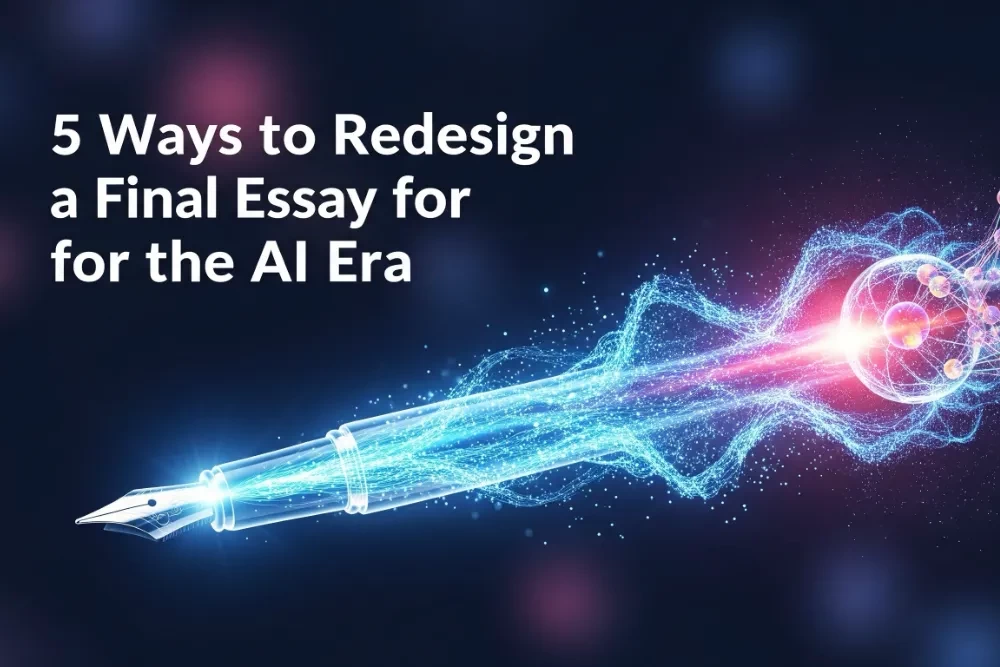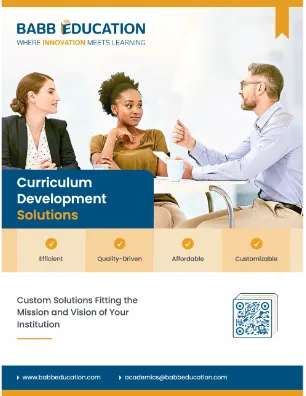The fear that students can simply prompt a tool like ChatGPT to write an essay in minutes is real, but fighting this technology is a losing battle.
The good news is that this moment presents a profound opportunity. We can finally move away from assessments that reward information recall and instead design assignments that cultivate the critical, creative, and analytical skills our students truly need.
This isn't about "AI-proofing" your assignments; it's about making them better, more authentic, and more valuable learning experiences. Here are five practical ways to redesign your final essay.
- The AI-Critique Model
- Instead of asking students to write an essay from scratch, instruct them to use an AI tool to generate an essay on your prompt. Their assignment is then to write a detailed critique and enhancement of the AI's output. They must identify factual errors, logical fallacies, inherent biases in the training data, and weak arguments. They then must rewrite sections, adding nuanced analysis and citing course materials to create a superior product. This directly assesses critical thinking and analytical acuity. - The "Modern Synthesis" Project
This approach reframes the essay as an exercise in evaluating and synthesizing diverse sources. The prompt requires students to build an argument using a minimum of three types of sources: required course readings, at least two peer-reviewed academic articles they find themselves, and an AI-generated summary on the topic. A key part of the rubric requires them to explicitly analyze the strengths and weaknesses of each source type in their final paper, explaining why the human-authored academic sources provide a depth AI cannot replicate. - The Scaffolded Process Assessment
Shift the final grade away from a single submission and toward the entire process of creation. Grade the project in stages, with each step building on the last. This could look like:
Stage 1: A project proposal and research question (15%).
Stage 2: An annotated bibliography where students justify their source selection over alternatives (25%).
Stage 3: A full draft submitted for peer review (30%).
Stage 4: A short reflection on the feedback received and the final revisions made (30%).
This method assesses diligence, research skills, and responsiveness to feedback—all things AI cannot automate.
The Hyper-Specific or Personal Application
AI models are trained on vast, general datasets. They struggle with hyper-specific, localized, or deeply personal contexts. Transform a generic prompt into one that requires local knowledge.
For example, instead of "Analyze the principles of urban planning," the prompt becomes, "Using the principles of urban planning discussed in class, write a proposal to the Flagstaff City Council to redesign the Southside neighborhood corridor, addressing specific local traffic and business concerns." This requires students to apply general principles to a unique situation, a core higher-order skill.
- The Multimedia Translation
This two-part assignment assesses true mastery through the act of transformation. First, the student writes a standard academic essay. Second, they must "translate" their core argument into a completely different medium for a different audience. This could be a five-minute video script for a YouTube channel, an audio script for a podcast episode, or a detailed infographic for a community meeting. To successfully translate an argument, one must understand it at a fundamental level.
Redesigning long-standing assignments can feel daunting, but it's an essential step in modernizing our pedagogy. Partnering with your institution's instructional design experts can make this process manageable and even exciting. This practical approach to assessment is a key part of a larger institutional strategy. To understand how this fits into a campus-wide vision, read our complete Strategic AI in Higher Education: A Leader's Guide | Babb Education



